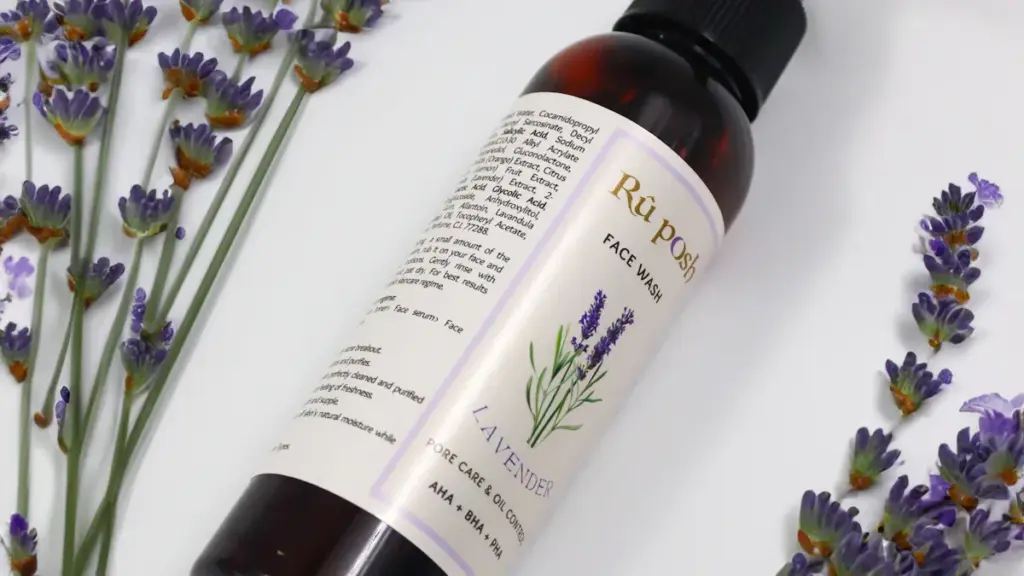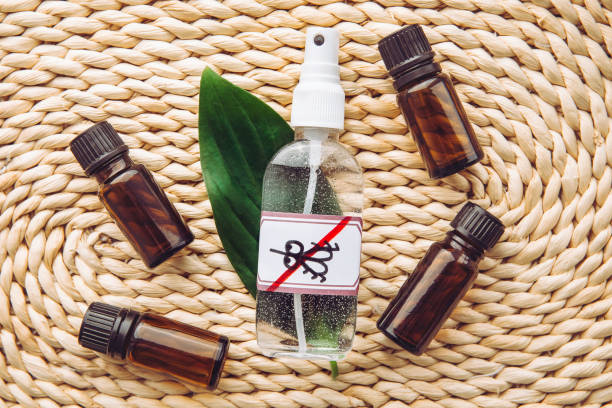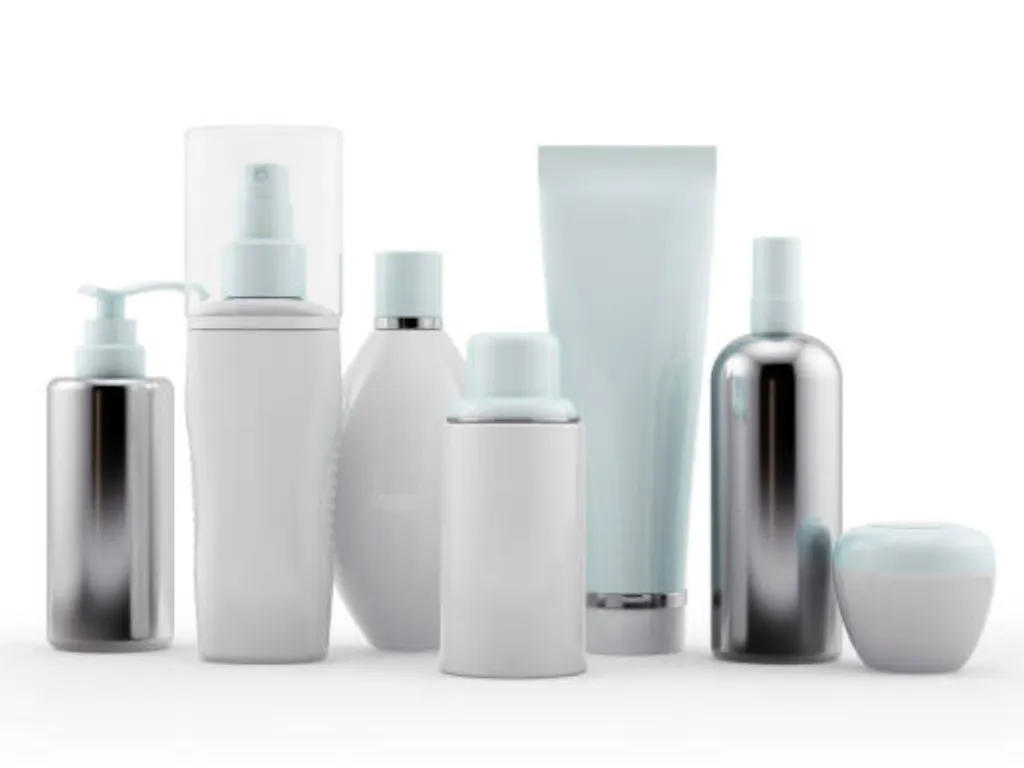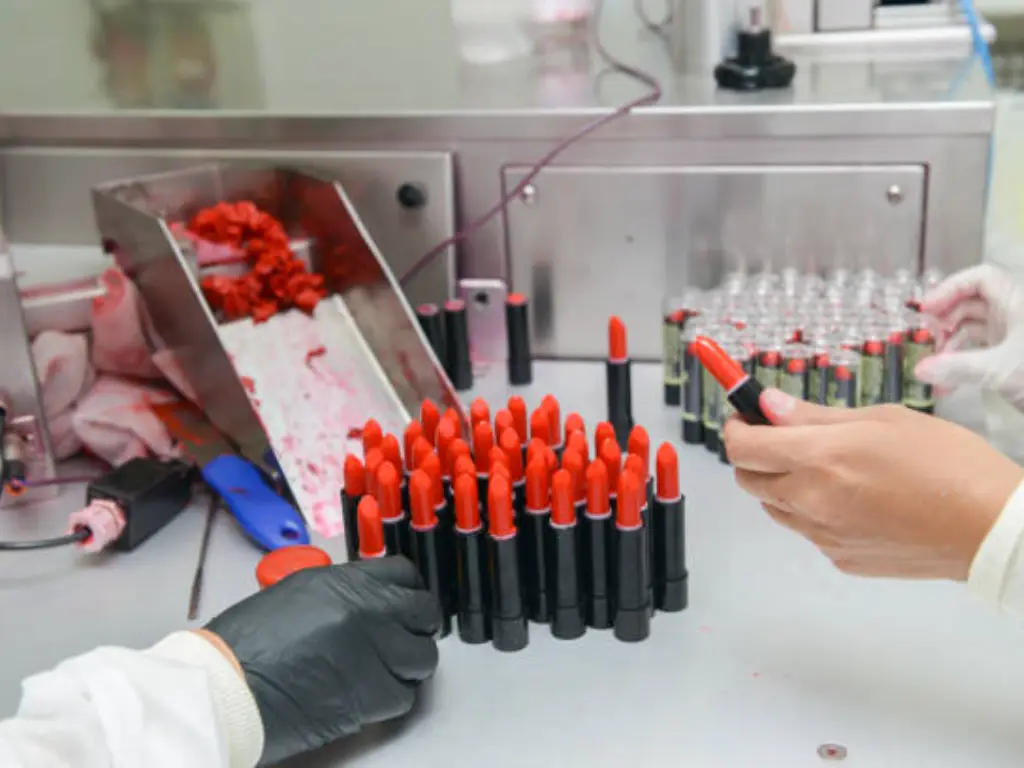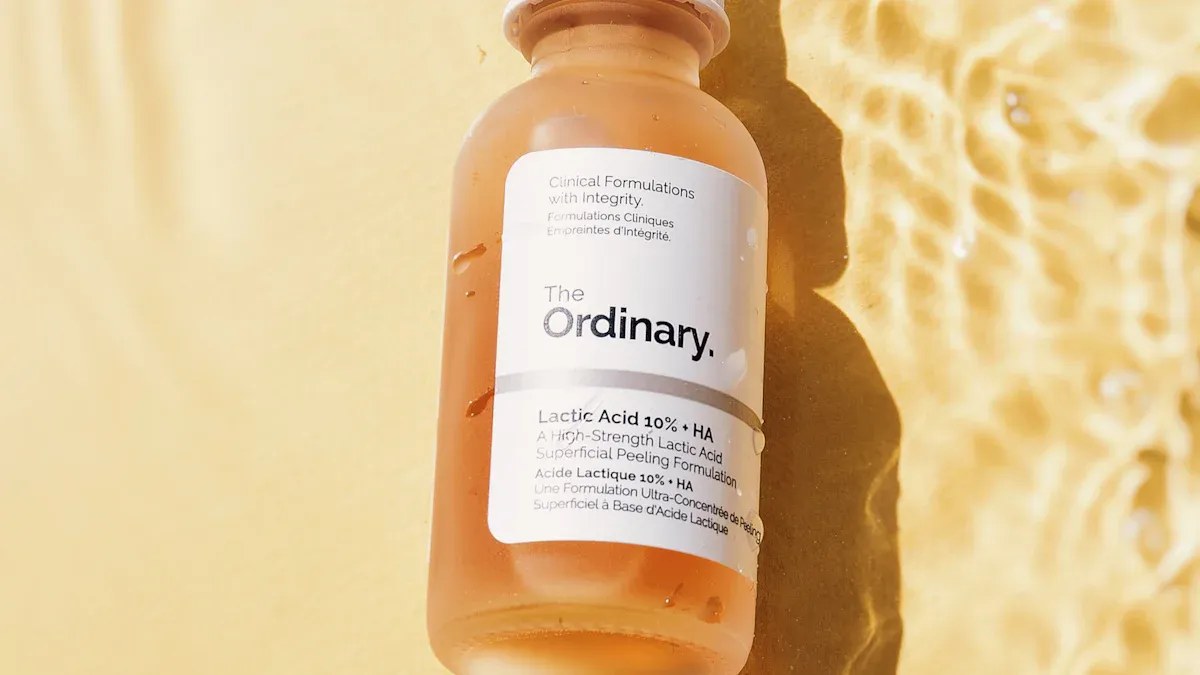
When you use skincare products, you trust that they are safe and effective. This trust comes from the rigorous application of quality control standards during manufacturing. These standards ensure that products are free from harmful contaminants and meet strict safety regulations. 품질 관리 우선 순위를 지정함으로써, manufacturers not only protect your health but also maintain the integrity of their brands. Every step, from sourcing ingredients to final packaging, reflects a commitment to delivering products you can rely on.
The Importance of Quality Control Standards in Skincare
Ensuring Consumer Safety
When you choose skincare products, you expect them to be safe for your skin. Quality control standards make this possible by ensuring every product undergoes thorough testing before it reaches you. These tests identify harmful contaminants, verify ingredient purity, and confirm that formulations meet safety benchmarks. Manufacturers use microbial testing to prevent bacteria or mold from contaminating products. Stability testing ensures that products remain effective throughout their shelf life. By following these protocols, companies protect your health and provide you with high-quality products that you can trust.
Building Brand Trust and Loyalty
Your trust in a skincare brand grows when you know its products are safe and effective. Quality control plays a key role in building this trust. Brands that prioritize quality assurance demonstrate their commitment to delivering reliable products. When you see consistent results from a product, you’re more likely to remain loyal to that brand. Transparent practices, such as sharing ingredient sourcing details or testing procedures, further strengthen this trust. Companies that invest in quality control standards not only earn your loyalty but also establish themselves as leaders in the skincare industry.
Meeting Industry and Regulatory Expectations
Skincare manufacturers must meet strict regulatory requirements to ensure their products comply with global standards. Quality control standards help them achieve this by aligning their processes with industry benchmarks. 예를 들어, regulatory compliance metrics, ~와 같은 the number of audits completed or the frequency of compliance training, measure how well companies adhere to these requirements. These metrics guide manufacturers in optimizing their processes and maintaining high-quality products. By meeting these expectations, brands ensure their products are safe for you and ready for international markets.
Supplier Selection and Ingredient Quality Control
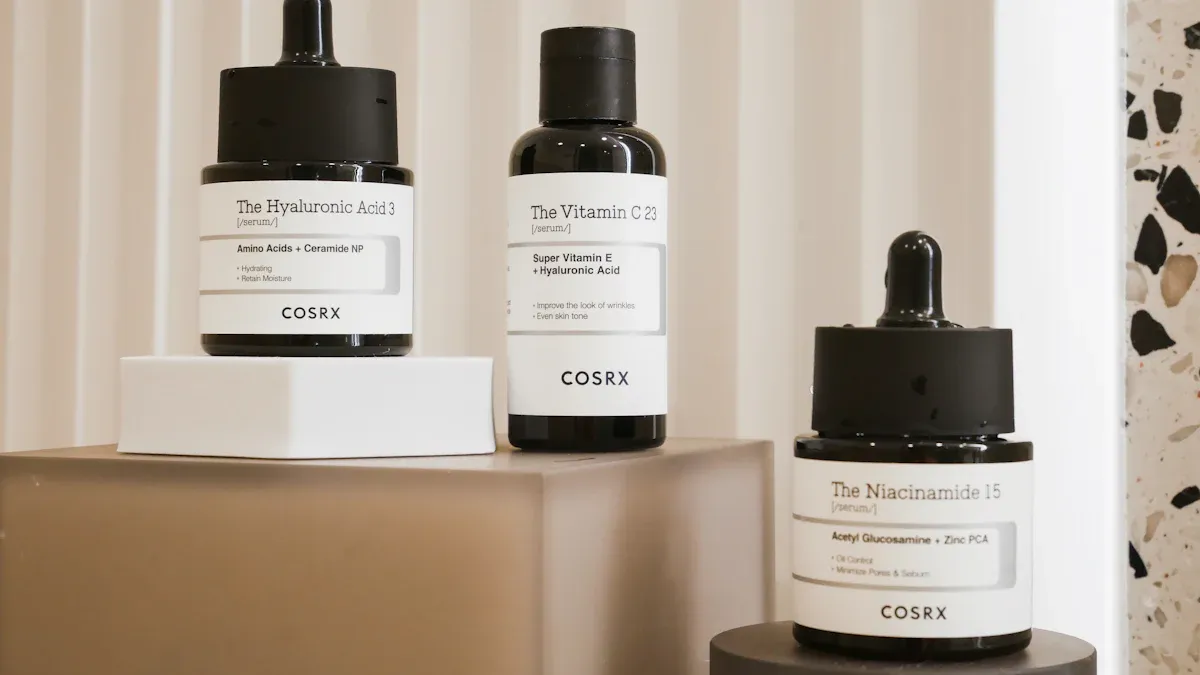
Vetting Suppliers for Compliance and Reliability
Choosing reliable suppliers is essential for maintaining the quality of skincare products. You need suppliers who comply with safety regulations and demonstrate robust raw material management systems. Inspections of suppliers often focus on these criteria to ensure ingredient quality control. 예를 들어:
Inspections conducted on 24 companies revealed that 19 were private enterprises, ~하는 동안 5 were foreign or joint ventures.
Larger enterprises and small-to-medium-sized businesses were evaluated for their compliance and reliability.
Key areas of focus included supplier management and adherence to safety standards.
By vetting suppliers thoroughly, manufacturers ensure that only high-quality ingredients enter the production process, safeguarding the integrity of skincare products.
Testing Ingredients for Purity and Safety
Ingredient testing is a cornerstone of quality control in skincare manufacturing. You can rely on advanced empirical methods to validate the purity and safety of raw materials. These methods include:
Method Type | 설명 |
|---|---|
Techniques like HPLC and GC-MS separate and identify complex mixtures in formulations. | |
Spectroscopic Methods | Colorimetry provides rapid, non-invasive analysis for color measurement in products. |
Interfacial Methods | Surface and interfacial tension measurements ensure product stability. |
Rheology | Flow and deformation studies assess structural behavior. |
Electronic Nose Technology | Scent analysis characterizes fragrance components effectively. |
Analytical Ultracentrifugation | Emulsion stability assessments provide insights into longevity. |
These testing protocols ensure that every ingredient meets stringent safety and quality benchmarks, giving you confidence in the products you use.
Traceability and Transparency in Sourcing
Transparency in ingredient sourcing builds trust and promotes sustainability. Brands increasingly adopt traceability practices to share detailed information about their supply chains. 예를 들어, platforms like Kezzler empower you to make informed decisions by providing insights into ingredient origins and environmental impact. 비슷하게, E.L. Companies map supply chains back to their origins, reducing risks and enhancing sustainability. Clarins takes transparency further with its T.R.U.S.T. platform, which uses blockchain technology to trace skincare products from their source to your hands. These initiatives ensure that you know exactly where ingredients come from, fostering confidence in the quality and ethical standards of skincare products.
Regulatory Compliance and Quality Control
Adhering to Global Standards (예를 들어, FDA, ISO 22716, EU Regulations)
When skincare products meet global standards, you can trust their safety and effectiveness. Regulatory bodies like the FDA, ISO, and EU ensure that manufacturers follow strict guidelines to produce high-quality products. These standards cover everything from ingredient sourcing to packaging. 예를 들어:
Region | Regulatory Body/Standard | Key Compliance Details |
|---|---|---|
USA | FDA | Regulates cosmetics under the FD&C Act and FPLA; requires compliance with the Cosmetics Safety Amendments Act of 2012. |
European Union | EU Regulations | Ensures uniform implementation of rules across member states; strengthens safety and streamlines procedures. |
Korea | MFDS | Controls risk profiles, hazardous substances, and GMP qualification; benchmarks against ISO 22716. |
이러한 표준을 준수함으로써, manufacturers ensure that products meet regulatory requirements and are safe for you to use. These benchmarks also help brands expand into international markets, giving you access to trusted products worldwide.
Labeling Accuracy and Claims Validation
Accurate labeling protects you from misleading claims and ensures you know exactly what you’re buying. Regulatory bodies like the FDA and FTC monitor skincare products to ensure truthful labeling and advertising. 예를 들어:
Experimental studies should be reproducible and reliable.
Claims about product effectiveness must be backed by clinical and statistically significant data.
If a product claims to treat or prevent disease, it must meet drug requirements. This ensures that manufacturers don’t exaggerate benefits or mislead you. Current laws also highlight the importance of clear labeling to prevent deception. When brands validate their claims, they build trust and provide you with products that deliver on their promises.
Implementing Good Manufacturing Practices (GMP)
Good manufacturing practices ensure consistent quality in skincare products. GMP guidelines cover every step of production, from ingredient handling to packaging. Many companies have successfully implemented GMP to improve their operations:
A small skincare startup upgraded its processes to comply with GMP, resulting in consistent product quality and rapid growth.
A multinational cosmetics brand standardized GMP practices across all facilities, ensuring smooth operations while launching products in new markets.
An organic cosmetics company aligned GMP with eco-friendly practices, earning customer loyalty and becoming a role model for sustainability.
When manufacturers follow GMP, they produce high-quality products that meet regulatory requirements. This commitment to quality assurance gives you confidence in the skincare products you use.
Testing Protocols in Skincare Manufacturing
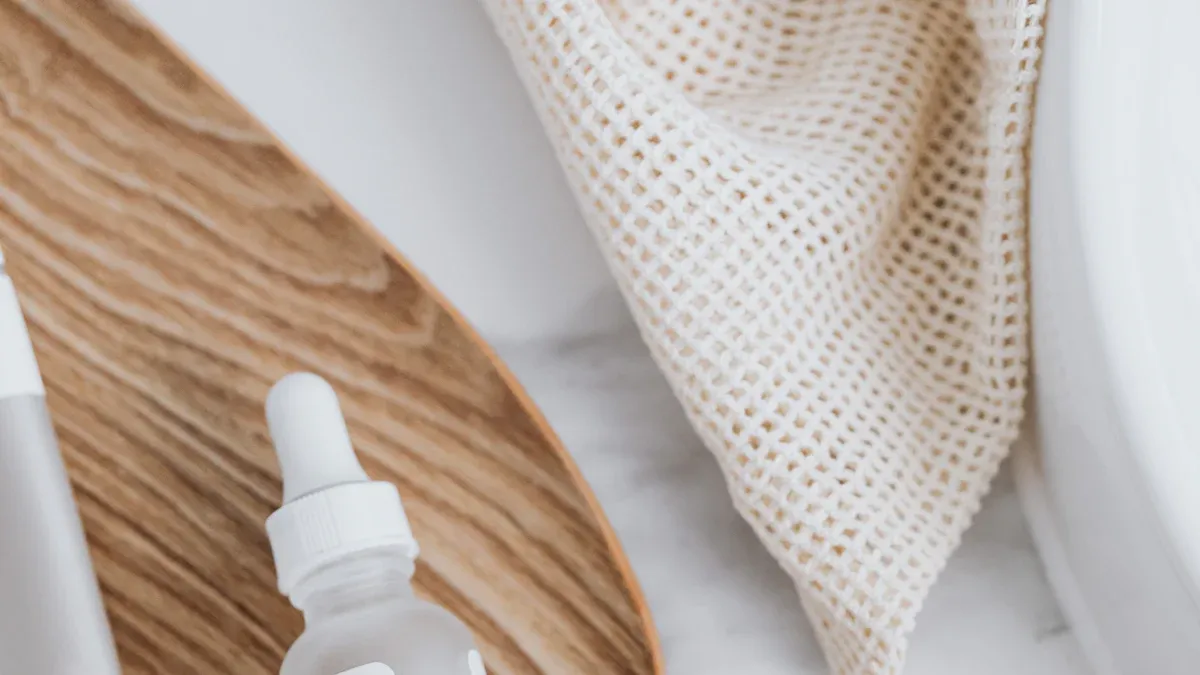
Microbial Testing to Prevent Contamination
Microbial testing ensures that skincare products remain free from harmful microorganisms before they reach you. This testing is a critical part of quality control in manufacturing. It identifies bacteria, mold, and yeast that could compromise product safety. Standards like ISO 29621:2011 help manufacturers determine which products require microbiological testing. For formulations with preservatives, the Challenge Test evaluates their effectiveness in preventing microbial growth. ISO 11930:2012 provides guidelines for conducting these stability studies.
Standard/Method | 목적 |
|---|---|
ISO 29621:2011 | Identifies low-risk cosmetic products that do not require microbiological standards. |
Challenge Test | Assesses microbiological stability and effectiveness of preservatives in formulations. |
ISO 11930:2012 | Provides guidelines for conducting microbiological stability studies. |
By following these protocols, manufacturers ensure that products are safe for your skin and meet regulatory requirements.
Stability and Shelf-Life Testing
Stability testing determines how long skincare products maintain their quality over time. This testing prevents issues like odor changes, mold growth, or skin irritation. It evaluates factors such as pH, viscosity, and microbiological stability. Compatibility testing examines how packaging interacts with the product, ensuring safety and integrity.
Stability testing ensures that products meet physical, chemical, and microbiological quality standards.
Testing predicts shelf-life under real-time or accelerated conditions.
Compatibility testing identifies packaging-related risks that could affect product quality.
These tests help manufacturers create stable products that remain effective throughout their shelf life. By conducting thorough stability testing, brands protect your health and deliver reliable skincare solutions.
Dermatological Testing for Skin Compatibility
Dermatological testing confirms that skincare products are safe for your skin. Patch testing is a common method used to evaluate skin compatibility. It involves testing on volunteers with normal or sensitive skin types. Independent institutes conduct these tests, analyzing skin reactions at multiple time points. This process differentiates between irritant and allergic reactions, ensuring product safety for sensitive skin.
While dermatological testing is not always legally required, international guidelines strongly encourage it. Standards like ISO 10993 for biocompatibility help assess product safety and efficacy. When brands conduct third-party lab testing, they validate claims such as “Dermatologically tested” 그리고 “Suitable for all skin types.” This builds trust and ensures you can use products confidently.
Documentation and Process Monitoring
Maintaining Batch Records for Traceability
Batch records are essential for ensuring product consistency and traceability in skincare manufacturing. These records document every step of the production process, from raw material procurement to final packaging. By maintaining detailed batch records, you can trace the origins of ingredients and identify any quality issues quickly. This practice enhances accountability and allows manufacturers to take corrective actions when deviations occur.
Batch records also support continuous improvement. They help identify trends and opportunities for refining processes, ensuring that products meet high-quality standards. 예를 들어:
Product Consistency: Every batch adheres to performance specifications.
Traceability: Full visibility from raw materials to finished goods.
Accountability: Assigns responsibility for each production step.
Audit Readiness: Keeps facilities prepared for regulatory inspections.
When manufacturers implement real-time data capture and automated systems, they reduce errors and improve compliance. These practices ensure that skincare products meet your expectations for safety and quality.
Tracking Quality Control Procedures
Tracking quality control procedures ensures that every product meets rigorous standards before reaching you. Manufacturers use 좋은 제조 관행 (GMP) to document and monitor each stage of production. This includes ingredient testing, formulation checks, and packaging inspections. Accurate documentation allows for prompt corrective actions if inconsistencies arise.
예를 들어, GMP emphasizes meticulous record-keeping to enhance traceability and accountability. By tracking procedures, manufacturers can identify risks and implement solutions to prevent future issues. This approach transforms operations into reliable systems that consistently deliver high-quality products.
Real-time monitoring tools also play a vital role in quality management. These tools provide immediate visibility into production processes, allowing manufacturers to resolve issues quickly. When brands prioritize tracking, they ensure that you receive safe and effective skincare solutions.
Ensuring Accountability Through Transparent Practices
Transparent practices build trust and ensure accountability in skincare manufacturing. Brands use innovative methods to enhance transparency, ~와 같은 digital batch records and predictive analytics. These tools improve traceability and minimize defects, ensuring product reliability.
Practice | 설명 |
|---|---|
Real-Time Stability Testing | Monitors products under various conditions to ensure potency. |
Customer Feedback Loops | Uses feedback to refine designs, improving user experience. |
Supplier Quality Management | Establishes stringent protocols to reduce variability and enhance reliability. |
Digital Batch Records | Adopts electronic records for better traceability and regulatory compliance. |
Predictive Analytics for Quality | Forecasts quality issues to minimize defects and ensure consistency. |
When brands share detailed information about their processes, you gain confidence in their commitment to quality. Transparent practices not only ensure accountability but also strengthen the integrity of the skincare industry.
Continuous Improvement in Quality Control
Conducting Regular Audits and Inspections
Regular audits and inspections play a vital role in maintaining high standards in skincare manufacturing. These evaluations help you identify risks and areas of non-compliance, ensuring that products meet stringent safety and quality benchmarks. By conducting frequent inspections, manufacturers refine their processes and reduce the likelihood of penalties.
Inspections highlight potential risks, allowing you to address them proactively.
Regular audits foster a culture of continuous improvement, ensuring operational excellence.
Structured frameworks from audits verify mitigation strategies and identify gaps in compliance.
When manufacturers prioritize audits, they create a cycle of improvement that enhances product reliability and builds trust in their commitment to quality control.
Leveraging Consumer Feedback for Product Refinement
Your feedback is invaluable in shaping better skincare products. Brands use various mechanisms to gather insights, such as free samples, social media polls, and Q&A sessions. These tools help manufacturers understand your preferences and refine their formulations.
Free samples provide direct feedback on product performance and user experience.
Ingredient transparency matters to ~ 위에 80% of consumers, influencing purchasing decisions.
Social media engagement reveals evolving trends and helps brands align with your expectations.
By listening to your voice, manufacturers adapt their products to meet your needs, ensuring they deliver solutions that resonate with you.
Staying Ahead with Industry Innovations
Innovations in skincare manufacturing drive continuous improvement in quality control. Brands adopt cutting-edge technologies and sustainable practices to enhance product quality and align with consumer demands.
Innovation Type | 설명 |
|---|---|
Reflects a commitment to sustainability by using environmentally friendly materials. | |
탄소 발자국 감소 | Optimizes processes with energy-efficient machinery and carbon reduction strategies. |
Personalization in Products | Tailors formulations to individual needs, improving efficacy and customer satisfaction. |
Enhanced Testing Capabilities | Expands in-house testing to ensure compliance and product reliability. |
Automated Quality Control | AI-powered systems like A-Eye 360° streamline inspections and maintain consistent quality. |
These advancements ensure that skincare products remain safe, 효과적인, and aligned with your expectations. By embracing innovation, manufacturers stay ahead of industry trends and deliver solutions that meet the highest standards.
Oully’s Commitment to Quality Control Standards
FDA-, 이소의 뜻, and cGMP-Certified Manufacturing Facility
Oully operates a state-of-the-art facility that adheres to FDA, ISO 22716, 및 cGMP 표준. These certifications ensure that every product meets the highest benchmarks for safety, reliability, and quality. The facility follows strict guidelines to prevent contamination, maintain proper labeling, and ensure product consistency throughout its shelf life.
측면 | 설명 |
|---|---|
Importance of GMP | Ensures product quality, safety, and reliability in manufacturing. |
Compliance Statistics | Non-compliance accounted for 58% of FDA warning letters in 2024. |
Key Areas of Focus | Preventing adulteration, proper labeling, and maintaining product quality throughout its shelf life. |
International Standards | ISO 22716 is the primary standard for cosmetics GMP. |
By implementing these standards, Oully ensures that its facility produces safe and effective skincare products you can trust. Comprehensive documentation and rigorous testing further enhance the reliability of every product.
Custom Formulation and End-to-End Support
Oully offers custom formulation services designed to meet your brand’s unique needs. This process includes raw material checks, in-process testing, and finished product evaluations to ensure consistent quality.
Raw Material Checks: Ingredients are inspected for compliance before production begins.
In-Process Testing: Products are monitored during manufacturing to confirm consistency.
Finished Product Evaluations: Final formulations undergo thorough testing to meet specifications.
설명 | |
|---|---|
Product Penetration | Does the product get into the skin? |
Biological Action | Does the product have a biological action in the skin? |
End Benefits | Does that action translate to end benefits for the patient? |
Oully also conducts clinical research and dermatologist-controlled studies to validate product efficacy. This ensures that every product delivers proven benefits, giving you confidence in its performance.
Sustainable Practices and Global Reach
Oully integrates sustainable practices into its operations to align with the values of today’s conscious consumers. The company uses eco-friendly ingredients, minimizes waste, and optimizes energy efficiency. These efforts resonate with Gen Z, who make up 32% of the global population and prioritize sustainability in their purchasing decisions.
Lush Cosmetics champions zero-waste packaging, inspiring similar initiatives.
Bite Beauty uses food-grade ingredients to reduce synthetic chemicals.
Glossier encourages recycling through minimalistic packaging.
Oully’s commitment to sustainability extends to its global reach, serving over 20 국가. By combining ethical practices with innovative solutions, Oully helps brands succeed in an increasingly eco-conscious market.
Quality control standards play a vital role in ensuring the safety and effectiveness of skincare products. These standards involve rigorous testing of raw materials and finished goods, following guidelines like ISO 22716 and Good Manufacturing Practices. By adhering to these processes, manufacturers deliver high-quality products that meet safety regulations and build consumer trust. You benefit from products that are not only safe but also reliable. Companies like Oully demonstrate this commitment by combining innovation, 규정 준수, and sustainability to create solutions you can depend on.
FAQ
What are quality control standards in skincare?
Quality control standards are guidelines that ensure skincare products are safe, 효과적인, and free from harmful contaminants. These standards include testing ingredients, monitoring production processes, and adhering to regulations like FDA and ISO 22716. They protect your health and build trust in the products you use.
Why is ingredient testing important?
Ingredient testing ensures that raw materials meet safety and purity requirements. It prevents harmful substances from entering formulations and guarantees that products are safe for your skin. Advanced methods like chromatography and spectrometry help manufacturers verify ingredient quality before production begins.
How do manufacturers ensure product safety?
Manufacturers follow strict protocols like microbial testing, stability testing, and dermatological evaluations. These tests identify contamination risks, confirm shelf-life, and ensure skin compatibility. By adhering to Good Manufacturing Practices (GMP), they maintain consistent quality and safety in every batch.
What does GMP mean in skincare manufacturing?
좋은 제조 관행 (GMP) are guidelines that ensure consistent product quality. They cover every step of production, from ingredient handling to packaging. Following GMP helps manufacturers prevent contamination, maintain accurate labeling, and meet regulatory standards.
How can you trust a skincare brand’s claims?
Look for certifications like FDA approval or ISO compliance. Brands that validate their claims through clinical studies and third-party testing demonstrate transparency. Accurate labeling and clear ingredient lists also show a commitment to delivering reliable, trustworthy products.
팁: Always check for certifications and testing details on a product’s packaging or website to ensure its quality.


